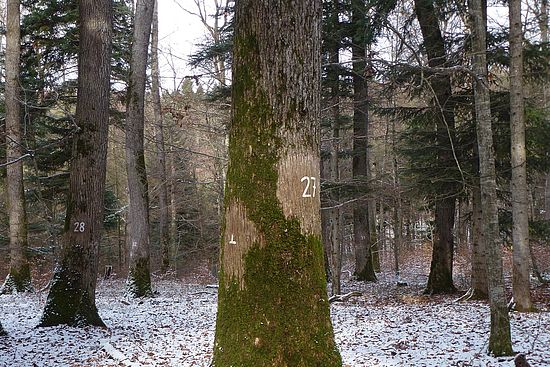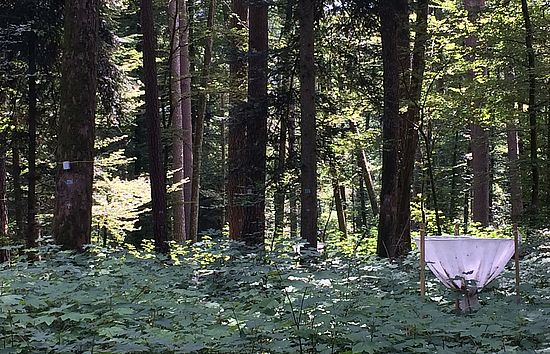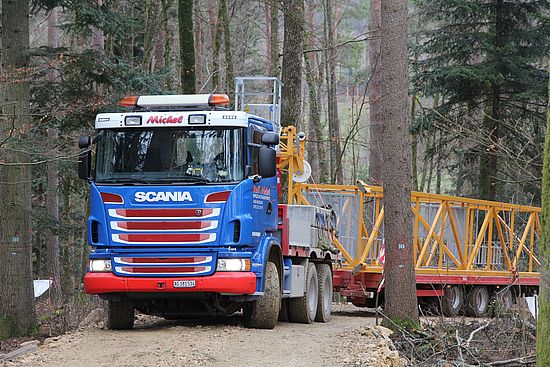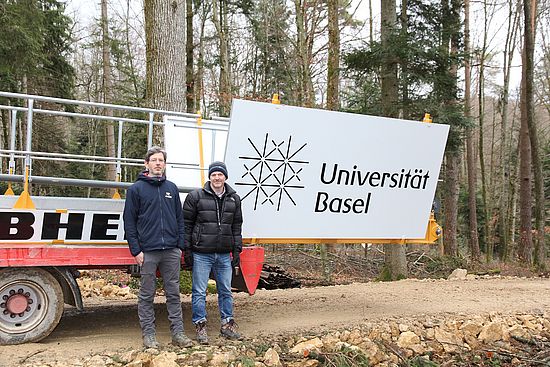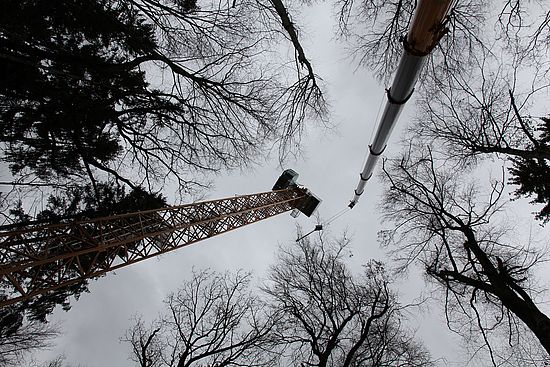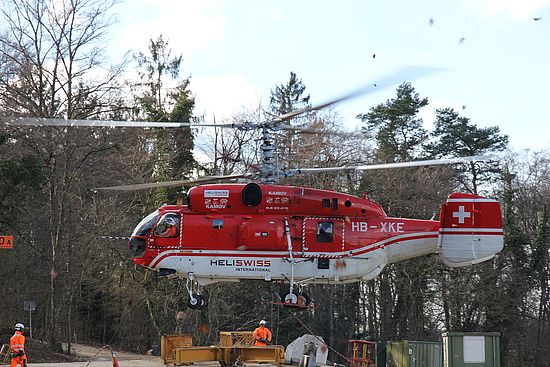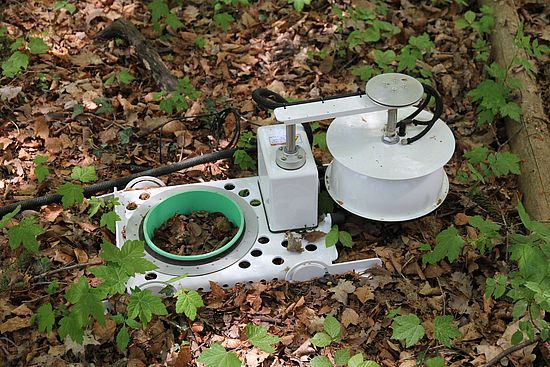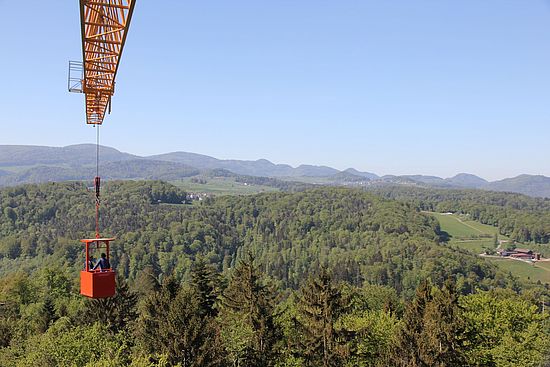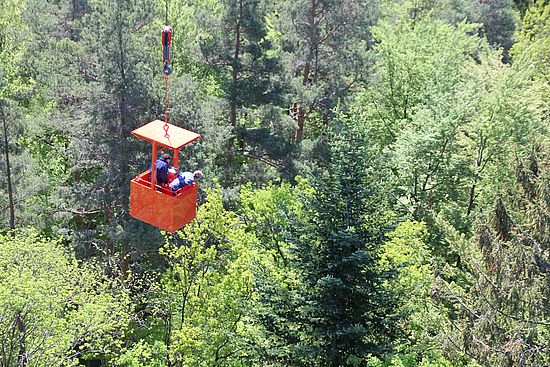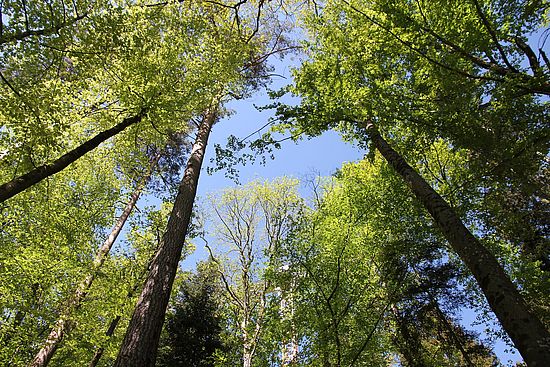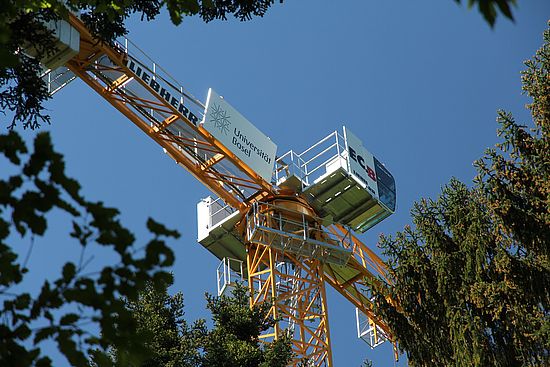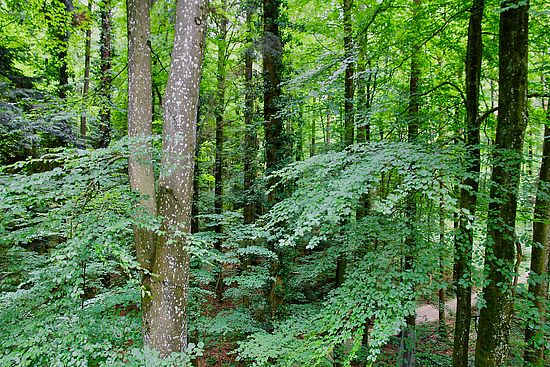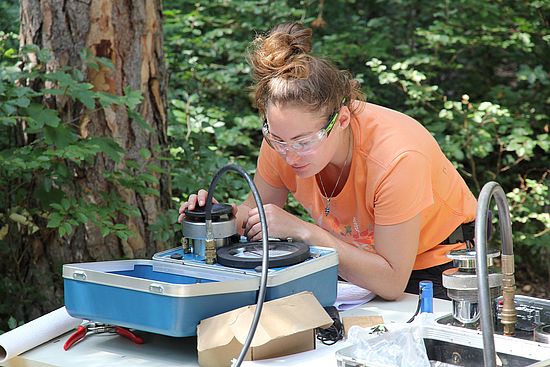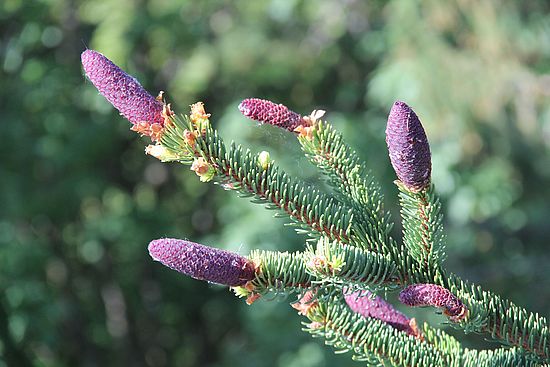
Swiss Canopy Crane II at Hölstein
A long-term climate change experiment
The future climate of central Europe will see rising temperatures and precipitation patterns that are expected to decline in the summer months. In addition, heat and drought events are expected to increase in frequency and intensity in the next decades. How forests in Switzerland will respond to changes in precipitation is not well understood. In 2018 we have established a new large-scale experimental research site in a mature temperate forest near Hölstein (BL) to investigate for the next 20 years:
- Which temperate tree species are most resistant to drought events and why?
- Can mature trees acclimate to a new climate?
- What are the consequences of drought events for ecosystem services that temperate forests deliver to society?
The research site is located in an exceptionally diverse forest that harbours more than 400 trees from 14 different species. The site is equipped with latest infrastructure, including 60 automated point dendrometers, automated soil respiration chambers, 72 ceramic suction cups at various locations and depths across the site, and a range of automated environmental sensors in the soil, the forest floor and in the canopy. A key piece of infrastructure is the new Swiss Canopy Crane II (SCC II), a 50 m tall crane with a 50 m jib that provides canopy access to 250 trees from 12 different species.
We are planning to install a 3100 m2 large roof under the canopy of the trees. The roof will consist of several segments of almost 1000 movable panels that can be automatically opened and closed. With this roof, we will exclude a fraction of the precipitation from the forest soil and simulate as such a future, drier climate over the next twenty years in order to address our research questions.
Quick Links

